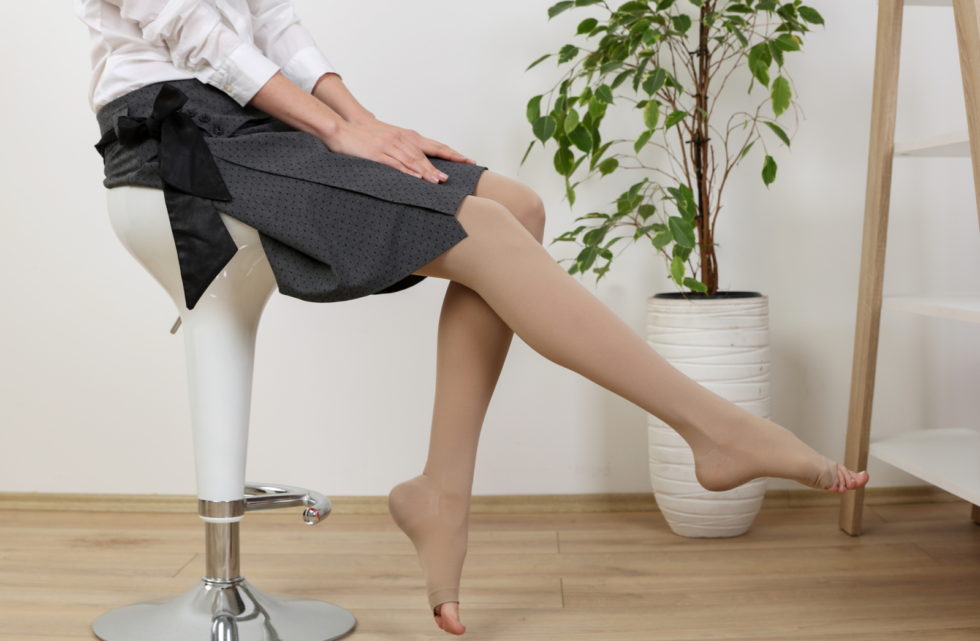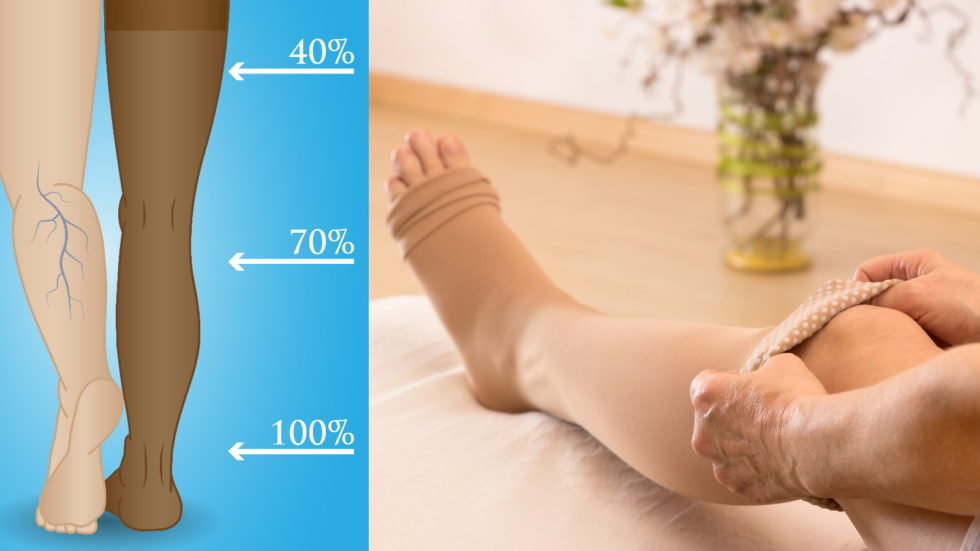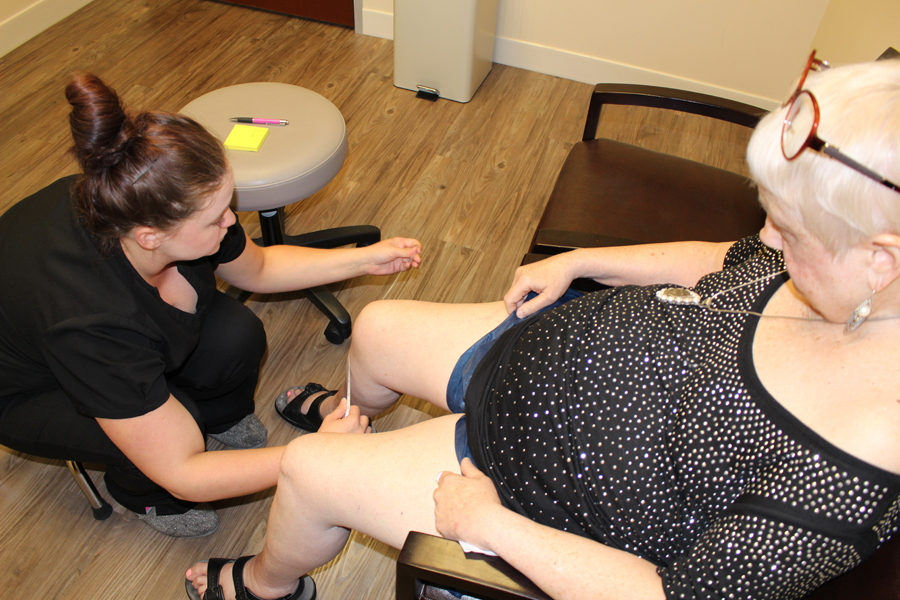Can Wearing Compression Socks Be Harmful? True or False
Author: StrideCare Internal Team

Do You Experience Any of These Vein Disease Symptoms?
- Throbbing and swelling in the legs and feet
- Pain or heavy feeling that worsens after standing for too long
- Skin discoloration around a varicose vein
- Bruising
- Burning sensation
- Itchy skin
How Do Compression Socks Work?
An average of one in every three adults over the age of 45 develops some form of vein disease. Veins serve a vital purpose of sending blood from the legs back up to the heart. But as we age or make poor lifestyle choices such as smoking, weight gain, or sitting or standing for too long, these veins can become narrow and even malfunction due to damage to the valves. As a result, blood flows forward but also backward, in the wrong direction (reflux). This reversal of flow leads to pooling of backed-up blood, which then causes the veins to bulge, stretch, and enlarge.
Typically, changes in the appearance of your legs start in the form of spider veins and varicose veins. Advanced stages can include swelling and skin changes, blood clots, leg ulcers, and more.
Compression socks can help avoid or slow down these more painful and life-altering stages of vein disease by applying gentle pressure and a continuous squeeze to your ankles and calves. According to the American Venous Forum, the compression these garments provide is graduated, with the strongest support starting at the ankles and gradually decreasing towards the top of the sock. This support works in conjunction with the pumping action of the calf muscles.

As a result, your weakened veins get the support they need to properly send blood back up to your heart, thus reducing swelling, improving circulation, and limiting pain. Compression socks are often recommended by prescription for people who are suffering from vein disease and other medical conditions. They can also be purchased over the counter by relatively healthy people—especially those with jobs that require them to be on their feet a lot such as cooks, waiters, bartenders, hostesses, and more.
Beyond the situations mentioned above, compression stockings are also helpful to:
- Reduce swollen feet during pregnancy
- Reduce soreness from exercising by increasing blood flow
- Prevent blood clots during long airplane flights when you’re seated for long stretches
- Prevent deep vein thrombosis after surgery
When Are Compression Socks Possibly Harmful?
Not every person with leg and foot pain will benefit from compression stockings. For example, individuals with delicate or easily irritated skin might find compression socks make their condition worse. The same goes for individuals with severe peripheral arterial disease; compression stockings can restrict blood flow to the leg in these situations.
Furthermore, it must be remembered that inappropriately worn compression socks or those that aren’t properly fitted have the potential to cause issues. A few examples include:
- Cut off circulation — If compression stockings are too tight or not fitted for your unique situation, they can go beyond continuous gentle pressure that supports circulation and instead restrict blood flow.
- Breaks in the skin — Inappropriately worn compression socks, especially in older, malnourished patients and those with thin, brittle skin creates uneven pressure distribution that can lead to breaks in the skin. Although rare, it highlights the importance of careful assessment, application, and monitoring of compression stockings.
- Chafing and bruising — To piggyback off the previous example, people with compromised skin may experience cuts, scrapes, and bruises from the socks. If they do wear them, they should be fitted properly.
- Itchiness and irritation — Redness and temporary dents in your skin at the edge of the sock’s fabric are a common side effect of improperly-fitted compression socks.
Depend on StrideCare for the Right Compression Socks
It’s best to consult with a vein doctor before starting a compression socks therapy regimen. At StrideCare, our team will ensure you are fitted for the right socks. We do this by taking exact measurements and giving you the correct compression therapy for your level of venous reflux as determined by your vein doctor. As part of our process, during your visit we will measure:
- Circumference of your ankle at the narrowest part of the ankle, just above the ankle bone.
- Circumference of your calf at the widest part of the calf.
- Length of your calf, taken on the outside of the leg, by measuring from the floor up to the bend of the knee.

Additionally, here are a few key guidelines or tips for wearing and caring for them.
9 Guidelines for Compression Socks
Socks or stockings with flat seams are typically more comfortable to wear inside your work shoes.
- Compression stockings should be tighter around the ankle and gradually loosen as it moves up the leg.
- Ensure the sock band lies flat and the top of the band sits 2 finger widths below the crease of the knee.
- Socks should be snug but not too tight to where they are uncomfortable and restrict blood flow.
- Never pull the sock up into the crease behind your knee as this may limit circulation.
- To prevent bacteria from building up and causing skin irritation, wash your compression socks every day.
- If you are unsure that your socks are washing machine safe, hand washing is recommended
- Use a mild soap or detergent and cool water. Avoid using hot water which may damage the fabric.
- Gently squeeze excess water out of your socks and air dry them or lay flat to. Do not wring them as this may damage the fabric.
There are different compression levels for certain brands, which can be confusing. At StrideCare, we provide the top, most reliable medical-grade brands with the correct compression level and size, at your appointment.
Find the Experts You Can Trust at StrideCare
When it comes to vein disease and choosing the right pair of compression stockings for your situation, the key is not to delay seeking help. Our expert doctors and caring staff at StrideCare are here to look through all available options to ensure you are getting the best treatment and long-lasting results. If this means a conservative approach with compression socks first, then that’s what we will do. If compression socks therapy doesn’t work or is not useful, we utilize the latest technologies and minimally invasive procedures to help our patients with a variety of vein and artery diseases.
The vascular physicians at StrideCare are board-certified diagnostic radiologists with additional fellowship training in vascular and interventional radiology. They are highly rated by patients as indicated by the many 5-star reviews.
Prior to starting any new treatment or questions regarding a medical condition, always seek the advice of your doctor or other qualified health provider. This information is not a substitute for professional medical advice.
StrideCare serves the South Texas area including Houston, San Antonio, Austin, Round Rock, Bastrop, Brushy Creek, Cedar Park, Converse, Georgetown, Hutto, Kyle, Leander, Marble Falls, New Braunfels, Pasadena, Pearland, Pflugerville, San Marcos, Schertz, Houston, Sugar Land, Katy, Webster, Bay City, Clear Lake, Lake Jackson, The Woodlands, Universal City, Spring, Kingwood, Stafford, Conroe, Texas City, Cypress, League City, Bellaire, and more.


